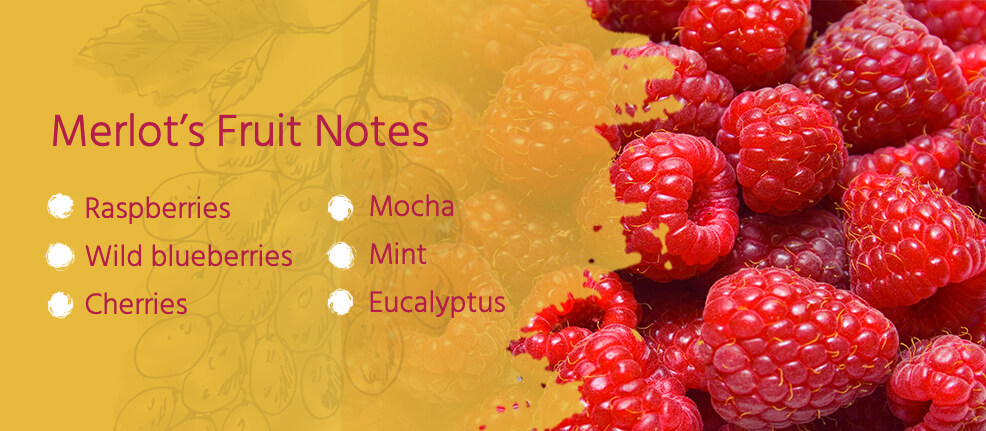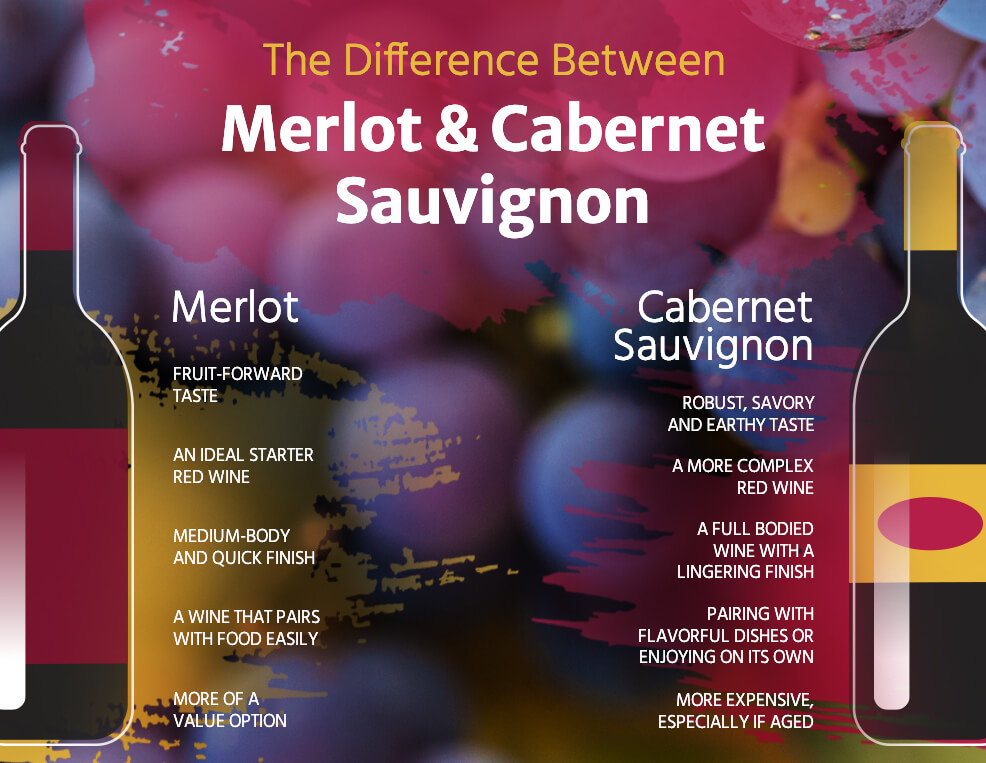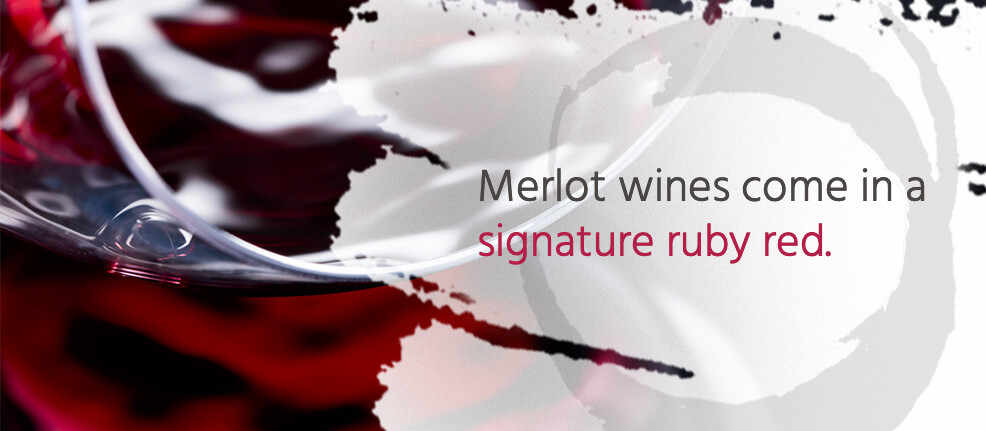Cabernet sauvignons and merlots are two wildly popular and well-established red wine varietals. They’re so beloved that they rank as the two most-planted wine grape varietals globally — over 840,000 acres for cabernet sauvignon and 657,300 acres for merlot.
However, if you’re like most people and don’t carry a sommelier certificate, it can be hard to distinguish between the two. Cabernet sauvignon and merlot wines share many similarities to the naked eye, but their sips can carry vast, subtle differences for the discerning tongue to untangle. The two wines also have different food pairings despite their similarities.
Learn some terms and descriptions commonly used when wine tasting to help you better understand the differences between merlot and cabernet sauvignon. Then, appreciate the rich heritage between these two delicious red wines — and impress your friends along the way — with this in-depth cabernet sauvignon versus merlot guide.
Merlot vs Cabernet
The difference between merlot and cabernet comes down to things like the tannins, color, body, bouquet, acidity, flavor and strength. We dive into each one below.
Cabernet Sauvignon Description – How Cabernet Differs from Merlot
Cabernet sauvignon hails from the legendary wine region of Bordeaux, France. Its grapes grow best in warmer, milder climates. Vineyards grow them in nearly every wine-producing area of the world, from the mountain foothills of Chile to California’s golden groves to Australia’s outback vineyards.
What distinguishes cabernet sauvignon from the almost-as-beloved merlot — and other types of red wine, for that matter? Explore the unique taste profile and composition of cabernet sauvignon below.
1. Tannins: Medium to High
Unlike merlot, Cabernet sauvignons grapes carry medium-to-high tannin levels. The high tannin levels mean this grape varietal produces a bolder, mouth-drying base. Tannins interact with the proteins in your saliva to cause the astringent drying sensation you’ll notice while drinking a cabernet sauvignon. The tannins found in wine will soften and become less abrasive as the wine ages. Winemakers can also coax additional fruity and earthy tasting notes for their cabernet sauvignon bottles.
2. Color: Burgundy
On-the-vine cabernet sauvignon grapes are a distinct periwinkle blue. Once picked, fermented and bottled, a glass of cabernet carries a lush, deep red burgundy coloration with a noticeably lighter scarlet rim. The grapes have a high skin-to-pulp ratio, which is the primary factor in the dark color you see in a cabernet sauvignon. Other cabernet sauvignon color notes include:
- Opaque centers, with younger cab savs containing even denser, less translucent cores.
- Faded rims, with a glass of cabernet sauvignon lightest where it meets the glass
3. Body: Full
Cabernet Sauvignon is a full-bodied red wine. It tops the list of robust red varietals, carrying some of the lushest, thickest sips that will coat most of the mouth and linger. Many describe cabernet sauvignon’s body as unctuous, gravelly, rich and deep. The region the grapes grow in will also impact the wine’s body. Cool climate wines like the cabernet sauvignon will be drier and have more noticeable notes of herbs and vegetables than a warm-climate varietal, which will taste more of ripe fruit and spice. Its full-bodied composition also means this wine type:
- Is on the strong side, averaging between 13.5 to 15% alcohol by volume
- Is best served at slightly below room temperature
4. Bouquet: Earthy
One of the defining features of cabernet sauvignon is its bell pepper aroma. Decanting a fresh bottle of cabernet sauvignon will introduce the nose to notes of peppers, cassis, dark chocolate, peppercorns, pencil shavings and figs. The aroma may remind you of being deep in a forest or sitting around a campfire due to the wine’s time spent aged in oak.
However, don’t let its earthy and savory-leaning bouquet mislead you. Drinking a glass of cabernet sauvignon will also present mild fruit notes, most notably black currants and ripe dark berries. Read more on the fruity versus dry flavor profiles of cabs below.
5. Acidity: Medium
Unblended, pure cabernet sauvignon is a medium-acidity wine. The wines carry a pleasant amount of pucker and tart that hits your tongue upfront before giving way to its earthier and sugary notes.
6. Flavor: Dry
Cabernet Sauvignon is one of the driest red wine varietals on the market — indeed, they’re one of the driest wines altogether! Thanks primarily to its robust body, a sip of cabernet sauvignon will feel denser and heavier on the tongue, therefore creating that familiar, mouth-drying sensation from the high amount of tannins. Cabernet Sauvignon has very little residual sugar because winemakers allow the yeast to ferment for long periods and consume the sugar. The lack of sugar is what creates a dry wine.
7. Strength: Moderate to Intense
Cabernet sauvignon’s bold, full body and high tannin count are the one-two punch behind its moderate to intense strength. Depending on the soil quality where the grapes grew, its maceration techniques, oak processing and aging amount, the balance between a cab sav’s vegetal, spice and fruit notes will vary. A French cabernet sauvignon is likely to be much earthier and more robust than a more fruit-forward Argentinian varietal. One thing is sure, though — you’ll get nuance in a good bottle of cabernet sauvignon, presenting you with a rich-tasting glass of wine great on its own or paired with food.

8. Finish: Long and Savory
A cabernet sauvignon’s finish is robust and earthy, blending sharp spices with smooth herbs and pops of wild dark berries. You’ll hear many people describe a cabernet sauvignon’s finish with flavors like anise, peppercorn, cassis, ripe dark berries and fresh-cut wood. The finish from a cab sav will leave you with a long aftertaste due to the tannins and full body.
9. Fruit Notes: Subtle and Tart
Cabernet sauvignon is a red wine whose flavor profile blends savory with pops of fruit. Of those fruit tasting notes, flavors and aromas skew more toward wild, foraged, and tart produce. You’ll taste things like:
- Blackberries
- Black currants (cassis)
- Black cherries
- Figs
- Black plums
- Boysenberry
- Blueberry
10. Oak Notes: Delicate
Winemakers allow most cabernet sauvignons to age in oak barrels. However, the oak-aging process aims to finesse the tannins present within the wine, since oak barrels also contain tannins that affect a final bottle’s flavor. The aging process mellows the tannins naturally found in the cab sav to produce a wine that isn’t as overpowering.
Oak-aged cabernet sauvignon integrates its bold, peppery profile with the vanilla, toasted or smoky qualities of oak tannins, creating a final cabernet sauvignon with increased flavor and structure complexity.
Merlot Description – How Merlot Differs from Cabernet
Like many other wine grape types, merlot calls the Bordeaux region of France home. Cultivated in the late 1700s, merlot grapes are a younger varietal in the red wine family. However, merlot wine marries unique elements of sweetness, smoothness and spice unmatched by most other varietals, catapulting it to a flavor profile all its own.
1. Tannins: Low to Medium
A glass of merlot contains low, subtle amounts of tannins, particularly compared to other red wines like a Bordeaux or cabernet sauvignon. This low tannin count is a significant contributor to merlot’s silky, fruit-forward taste instead of a mouth-drying full-bodied pour. There are still some tannins present in merlot, though. If you’re sensitive to tannins or don’t like the dry mouthfeel, a pinot noir or a grenache are two reds with lower tannin levels.
2. Color: Ruby Red
Merlot wines come in a signature ruby red. Their centers are darker and opaque, with little light passing through. As merlot ages, its colors and cores will further lighten to a garnet color.
A standard glass of merlot will also carry sharp rim variation. Merlot rims have a distinct orange edge — a color not often present in other red wine types. Other color distinctions for merlots include the following.
- Merlots grow paler as they age
- Merlot rims darken as they age, changing from orange to firehouse brick red
3. Body: Medium to Full-Bodied
Merlot carries an airy, refreshing but fragrant body. Sips will hit the front and center of your tongue, then quickly glide away, leaving traces of sweet summer fruits. The overall effect is a red wine type with delightful suppleness, drinkable by itself or paired with a wide range of foods.
Merlot counts as a full-bodied wine because of its high alcohol content, typically above 13.5%. Despite its full body, a merlot is still easy to drink because of its lower tannin levels.
4. Bouquet: Fruity
Smell a glass of merlot, and you’ll experience scents of cherries, raspberries, licorice, plums and espresso. Its fruit-forward palate is one of merlot’s most defining characteristics. However, those grown in cooler climates like classic French merlot carry slightly more structure, adding earthier upticks like tobacco, mocha and cassis to smells and sips.
5. Acidity: Medium
When it comes to acidity, merlot sits in the middle of the red wine pack. It displays refined pops of sweet and tart, softened by the lower tannin count and medium-light body.
6. Flavor: Dry
Merlot has a dry flavor profile with virtually no residual sugar left after fermentation.
However, merlot’s dry versus sweet classification can be confusing to novices. Even though merlot is a fundamentally fruit-forward red wine, it lacks a defining sugary-sweet aftertaste. Consider what it’s like to eat a strawberry-flavored piece of candy versus an actual strawberry to illustrate the difference. The former is overtly, almost syrupy sweet, while the latter is much more delicate. Merlot is low in sugar, but the fruity aroma helps trick the brain into thinking it tastes a touch sweeter than it is.
7. Strength: Moderate to Intense
A merlot’s strength depends on whether it comes from a warm climate — such as a Californian merlot or an Australian merlot — or a cool one — such as a French, Italian or Chilean merlot varietal.
- Cool weather merlot is decidedly more intense, integrating a bit more pungent, earthier flavors alongside red fruits.
- Hot weather merlot maintains that juicy, berry, refreshing zip beloved of this red wine type.
8. Finish: Silky
Both warm and cool-climate merlots contain a characteristically silky finish. Merlots maintain that signature smooth, even and velvety balance from the tip of the tongue to the back of the throat, providing a mellow end to each sip
9. Fruit Notes: Red Fruits

Merlots are among the most fruit-forward of all red wines, making them a highly approachable and flexible beverage choice. Merlot’s lush fruity notes often include flavors like:
- Raspberries
- Wild blueberries
- Black cherries
- Mocha
- Mint
- Eucalyptus
- Plum
- Dark fruit jam
10. Oak Notes: Coffee and Cocoa
Merlots tend to receive medium-age barrel processing, meaning they age a minimum of eight to 12 months. It’s just enough time to introduce more decadent, in-depth sweet notes to the varietal, reminiscent of cocoa beans, espresso powder and even smoke. The oak aging further softens the tannins in the merlot.

Merlot vs Cabernet Sauvignon: How to Pick Between the Two
Cabernet sauvignon and merlot can be confusing given their shared lineage and some congruent characteristics. To complicate matters, both comprise the signature base of Bordeaux blends, a popular red wine mixture that aims to highlight the best of both these varietals.
What’s the real difference between Merlot and Cabernet Sauvignon — and how do you know which to pick for a particular meal, event, or nightcap? Find out once and for all with this Merlot/Cabernet Sauvignon comparison.
1. Merlot and Cabernet Sauvignon Similarities
Both merlot and cabernet sauvignon derive from the same parent grape — the cabernet franc. Sharing a branch on the family vine means these two varietals maintain a handful of similarities, namely when it comes to their color, strength, and dryness levels:
- Cabernet and merlot have deep, dark, ruby-colored bodies.
- They hold opaque centers and lighter rims.
- Both are moderate to intensely strong, carrying bright flavor profiles and enticing unique sensations on the tongue.
- These wines take oak-barrel treatments well.
- These are dry red wines — indeed, they’re considered two of the driest commercial red wine types in the world.
2. Merlot and Cabernet Sauvignon Differences
Like any siblings, merlot and cabernet sauvignon maintain significant differences. When it comes to merlot vs cabernet, here’s what you can expect to see different:
- Merlot is a fundamentally fruit-forward wine.
- Cabernet sauvignon is a savory, earthy-driven wine, particularly when grown in cooler climates.
- Cabernet sauvignon’s body is fuller, heavier and more robust, lingering for longer on the tongue than merlot’s medium-body, quicker finish.
- Merlot is less tannin-pronounced, without as strong a drying or prickling sensation in the mouth.
- Though close, a merlot’s body should be a slightly lighter ruby red than cabernet sauvignon’s rich burgundy, especially if the merlot has aged.
- Merlot rims are orange, whereas cabernet sauvignons are gradient shades of red.
- Cabernet sauvignon will be more translucent around glass rims and edges than merlot.
When to Pick a Merlot
Opt for a bright bottle of merlot next time you or your friends are in the following situations:
- You’re new to drinking red wines.
- You prefer fruity, juicy or lighter red wines.
- You’re a fan of semillons, Californian pinot noirs and dry chenin blancs.
- You’re searching for a bottle of red wine to complement various foods or cuisines, such as during a potluck.
- You’re drinking outside on a hot day.
- You’re looking to be generally more budget-conscious, as more merlots grow stateside and thus tend to be more affordable.
When to Pick a Cabernet Sauvignon
Go for a delicious bottle of cabernet sauvignon if you or your party:
- Don’t like sweet wines, red or white.
- Crave a glass of wine to savor on its own.
- Are fans of dry Oregon chardonnays, Australian shiraz or tempranillo.
- Enjoy high-tannin, heavier wines with longer finishes.
- Are drinking indoors on a cool or winter evening.
- Want to experiment with higher-aged or oakier wines
Having trouble choosing between Merlot and Cabernet Sauvignon? Good news! You don’t have to settle for just one. A blend of both wines is also popular, like the Bordeaux Blend. Their unique flavors, tannin, and acidity complement each other. Merlot softens the harsh acidity of Cabernet Sauvignon making it smoother and less drying. In return, the acidic Cabernet Sauvignon gives merlot a fresher flavor. The combination of wines creates a delicious blend.
Cabernet Sauvignon and Merlot FAQs
Looking for quick answers to common questions about the differences between cabernet and merlot? Here are some typical questions customers ask.
What Is the Difference Between Merlot and Cabernet Sauvignon?
Merlot has a fruitier taste and a lighter color, while cabernet sauvignon is earthier with a deeper red hue. Cabernet sauvignon also has more tannins, giving it a stronger mouth-drying feel and a flavor that lingers longer on the palate. While the two wines have many similarities, such as sharing the same parent grape and similar strength, their differences make each distinct.
What Kind of Wine Is Cabernet Sauvignon?
Cabernet sauvignon is a red wine varietal. It originated in Bordeaux, France, and has a full body, medium acidity and a dry taste. Its flavor is earthy with notes of tart sweetness.
What Does Cabernet Sauvignon Wine Taste Like?
This wine varietal has a savory flavor with pops of fruitiness, including notes of blackberries, black currants, black cherries, figs, black plums, boysenberries and blueberries. The wine also ages in oak barrels, adding a layer of vanilla or toasted flavor. The flavor might also vary based on the climate where it is produced. In cool temperatures, the wine has more robust vegetable and herb notes, while warmer- climate varieties taste more like fruit and spice.
What Color of Wine Is Cabernet Sauvignon?
Cabernet sauvignon fits among the red wine family — this particular varietal has a deep burgundy hue. The wine has the lightest color around the rim, closer to scarlet. It also has an opaque center, especially after it has aged for a long time.
Is Cabernet Sauvignon Dry or Sweet?
This wine variety is dry. Cabernet sauvignon is one of the driest wines sold, especially among red wines. This dryness comes from a lack of sugar because winemakers who ferment cabernet sauvignon allow the yeast to consume all the sugar, leaving the wine with its signature dry taste.
Is Merlot Dry or Sweet?
Merlot, like cabernet sauvignon, has a dry flavor profile due to a long fermentation process in which the yeast consumes most of the sugar. While this wine varietal is dry, it has a strong, fruity aroma, which often makes wine drinkers think that it is much sweeter. Merlot also has low levels of tannins, a substance that often creates a dry mouthfeel. The wine has lush fruity notes and oak notes of coffee and cocoa.
What Is the Taste of Merlot Wine?
Merlot wine has a fruit-forward taste with notes of many red fruits, like raspberries, black cherries and dark fruit jam. The wine also has flavors like mocha, mint, eucalyptus and plum. When it undergoes oak barrel aging, it takes on new flavors, like cocoa beans and espresso powder — sometimes even a smoky taste.
Which Is Better, Merlot or Cabernet Sauvignon?
When people are asking who wins when it comes down to merlot vs cabernet, they are often wondering which is the better wine. That’s going to depend on the wine drinker, as there’s no one answer for if merlot is better than cabernet or if cabernet is better than merlot. Your best bet is to try both kinds and decide for yourself.
For those who prefer fruitier wines, merlot is a better choice. This wine is less acidic and slightly sweeter. Cabernet sauvignon has a much earthier taste with strong vegetal, spice and tart fruit notes. Both wines have lower sugar content, making them drier, but merlot has lower tannins and a more potent fruit aroma, making it seem sweeter and giving it a silkier mouthfeel.
Discover and Compare the World of Merlot and Cabernet Sauvignon Red Wines at Marketview
The world of red wines is rich, fascinating and — at times — overwhelming. At Marketview Liquor, we offer an extensive yet approachable catalog of cabernet sauvignon and merlot wines in-store and online, available to ship directly to your front door. Make your red wine comparisons easier with our online search features, filtering everything from price and points to subregions and vintage years. Browse our online selection, order your next wine case of merlot, cabernet sauvignon or both and give these delicious, complex wines a try!





